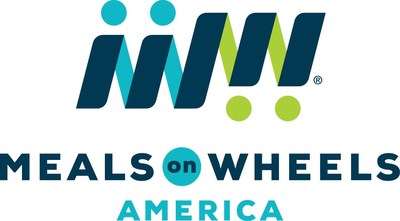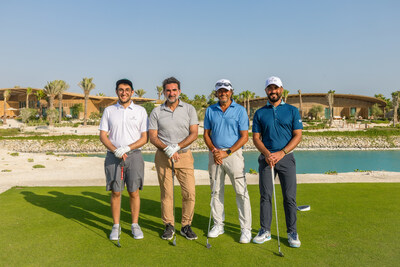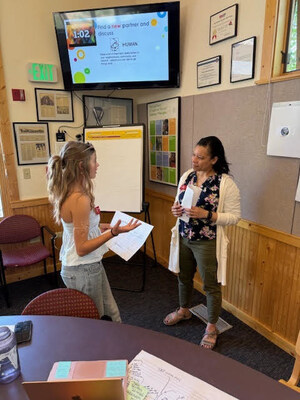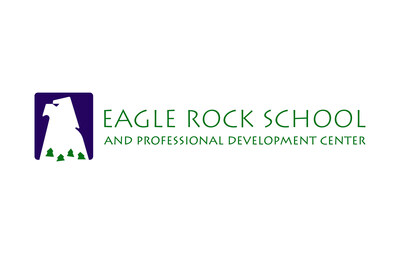PFAS are a group of man-made chemicals that are resistant to heat, water, and oil. Because of these properties, PFAS have been used in many industrial applications and consumer products for decades.
Unfortunately, these same properties make PFAS persistent and difficult to remove from the environment, earning them the nickname “forever chemicals.” PFAS contamination is a serious problem, and businesses need to take proactive steps to mitigate their environmental impact. In this post, we’ll discuss what PFAS mitigation is and why it’s so important. We’ll also cover some key PFAS mitigation strategies and how businesses can overcome challenges.
What Is PFAS Mitigation?
PFAS mitigation refers to the strategies and technologies used to limit the spread of per- and polyfluoroalkyl substances (PFAS) in the environment. Unlike remediation, which focuses on removing and destroying or neutralizing existing contamination, mitigation aims to prevent further PFAS pollution by controlling sources, improving treatment processes, and implementing long-term management plans.
Because PFAS are highly persistent and resistant to natural breakdown, effective mitigation is critical for protecting drinking water supplies, agricultural land, and ecosystems. Without proactive measures, contamination can spread through air, soil, and groundwater, increasing risks to human health and the environment.
Discover more: PFAS Remediation Guide to Treatment, Technology, & Regulation
Industries most affected by PFAS contamination
While PFAS contamination is a widespread issue, certain industries face heightened risks due to their reliance on these chemicals in manufacturing, product applications, or wastewater discharge:
- Manufacturing facilities – PFAS have been widely used in coatings, textiles, non-stick cookware, and plastics to enhance durability and resistance to water, oil, and heat. Industries such as electronics, automotive, and packaging have historically relied on materials that contain PFAS.
- Airports / military installations – Firefighting foams containing PFAS (AFFF) have been heavily used at airports and military bases, leading to significant groundwater contamination.
- Municipal water systems – Drinking water utilities must now address PFAS contamination, which often requires costly filtration and treatment infrastructure upgrades.
- Textile production – PFAS-treated fabrics and carpets, contribute to contamination through manufacturing processes and waste disposal.
- Chemical manufacturing – Certain industrial solvents and chemical formulations contain PFAS, leading to emissions and waste management challenges.
Key PFAS Mitigation Strategies
Effectively addressing PFAS contamination requires a focus on prevention, treatment, and long-term management.
Preventing PFAS contamination
The most effective way to mitigate PFAS pollution is to prevent it from entering the environment in the first place.
Eliminating PFAS in industrial processes
Many manufacturers are phasing out PFAS by reformulating products and modifying production techniques. Research into non-PFAS substitutes has led to innovations in coatings, surfactants, and water-resistant materials that do not persist in the environment. While some industries face challenges in replacing PFAS due to their unique properties, ongoing advancements continue to expand viable options.
Reducing PFAS discharge
Facilities that still use PFAS can implement best management practices such as closed-loop systems, improved wastewater treatment, and stricter handling protocols to minimize environmental release. Waste disposal methods should also be carefully evaluated to ensure they don’t contaminate air, soil, groundwater, and surface water.
Transitioning to Fluorine-Free Firefighting Foams
Another important PFAS mitigation strategy is replacing traditional aqueous film-forming foams (AFFF) with fluorine-free foams (F3) in fire suppression systems. AFFF contains PFAS and has contributed to significant environmental contamination, particularly at airports, military sites, and industrial facilities.
Fluorine-free foams offer effective fire suppression without persistent chemicals. Transitioning involves identifying AFFF systems, safely disposing of legacy foam, upgrading equipment if needed, and training staff on the new products.
This shift not only reduces future PFAS risk but also supports regulatory compliance and environmental stewardship.
Learn more: Be Proactive About PFAS with This PFAS Action Plan Guide
Advanced treatment solutions
Once PFAS enter the environment, they are difficult to remove due to their chemical stability and resistance to degradation. However, several treatment technologies have proven effective in reducing PFAS concentrations in water, soil, and waste streams. The right solution depends on factors such as PFAS type, contamination levels, volume, and treatment goals.
Granular activated carbon (GAC)
GAC is a widely used filtration method that removes PFAS by adsorbing them onto a porous carbon surface. It is commonly used in drinking water treatment plants and industrial applications.
As contaminated water passes through a GAC filter, PFAS molecules adhere to the carbon particles, effectively removing them from the water. Over time, the carbon becomes saturated and requires replacement or regeneration through thermal reactivation. GAC is highly effective for long-chain PFAS but may be less efficient for shorter-chain variants.
Ion exchange resins
Ion exchange resins are specialized materials that capture and remove PFAS from water by swapping ions in solution with charged sites on the resin.
PFAS-contaminated water flows through a resin bed, where positively or negatively charged resin beads attract and bind PFAS molecules. This process can achieve high removal rates, particularly for shorter-chain PFAS that may not be well-removed by GAC. Once the resin becomes saturated, it is regenerated or replaced.
Reverse osmosis (RO) and membrane filtration
RO and other membrane filtration technologies provide one of the most effective methods for removing PFAS from drinking water and industrial wastewater. These systems use semi-permeable membranes to physically separate contaminants from water.
Under high pressure, water is forced through a membrane with microscopic pores that block PFAS molecules while allowing clean water to pass through. RO is capable of removing even the smallest PFAS compounds, but it generates a concentrated waste stream that requires proper disposal or additional treatment.
Thermal destruction
High-temperature treatment methods such as incineration and thermal oxidation break down PFAS at the molecular level, preventing further environmental contamination.
PFAS-containing waste is subjected to extremely high temperatures (typically above 1,000°C), causing the chemical bonds to break apart and degrade into less harmful byproducts. However, effective destruction requires precise conditions, as incomplete combustion can generate harmful byproducts. The regulatory landscape for PFAS incineration is evolving due to concerns about potential air emissions.
Foam Fractionation (FF)
FF is a separation process that utilizes the polar and non-polar ends of the PFAS compound and a carrier gas (air or ozone) to concentrate PFAS within a foam. The foam is created by passing the carrier gas through the contaminated liquid stream. The foam is then separated for further concentration and/or disposal. In some cases, the concentration can be destroyed using another technology.
In Situ Treatment and Emerging Destruction Technologies
In addition to traditional treatment methods, new technologies are being developed to both contain and destroy PFAS. In situ solutions—those applied directly into soil or groundwater—are gaining traction as cost-effective, low-disruption options for managing PFAS plumes.
One of the most widely used in situ technologies is PlumeStop® by Regenesis, which forms a permeable barrier that captures PFAS and limits its migration through the subsurface. When combined with SourceStop®, this approach targets both active PFAS sources and downstream plumes, offering a strategic containment solution.
Meanwhile, destruction technologies such as Supercritical Water Oxidation (SCWO), Electrochemical Oxidation (ECO), and Photoreductive Defluorination (PRD) are advancing beyond the lab and showing promise for breaking PFAS down at the molecular level in commercial applications.
Destruction Technologies
Forever Chemicals are not necessarily forever anymore. Several technologies have advanced beyond the bench scale that are capable of destroying PFAS in commercial applications. In addition to thermal approaches discussed above, Super Critical Water Oxidation (SCWO), Electro Chemical Oxidation (ECO) and photor-eductive defluorination (PRD) are just a few of the destruction technologies that have been deployed on real-world sites. Typically, destruction technologies are typically lower volume solutions but can be combined with a concentration process like RO or FF that results in a zero-waste outcome.
Assessing Environmental Impact from PFAS
Understanding the full extent of PFAS contamination is a critical step in mitigation efforts. Because PFAS persist in the environment and accumulate over time, regular monitoring and thorough risk assessments are essential for identifying contamination hotspots and determining the effectiveness of treatment strategies.
Importance of routine testing for PFAS in water, soil, and air
PFAS can spread through multiple pathways, including groundwater, surface water, air emissions, and soil infiltration. Routine testing helps track contamination trends and ensures compliance with evolving regulations.
Key reasons for ongoing monitoring include:
- Early detection of contamination – Regular sampling can identify PFAS presence before it spreads further, enabling quicker intervention.
- Regulatory compliance – Many jurisdictions now mandate PFAS monitoring in drinking water, industrial discharge, and waste management.
- Effectiveness of remediation – Long-term monitoring ensures that treatment technologies are successfully reducing PFAS concentrations.
Testing frequency depends on site-specific risks, regulatory requirements, and the likelihood of new contamination sources.
Risk assessment models: Evaluating exposure and contamination levels
After data collection, risk assessment models help determine potential health and environmental risks associated with PFAS contamination. These models account for factors such as exposure pathways, contaminant concentrations, and toxicity levels.
Key approaches include:
- Conceptual site models (CSMs) – Visual representations of how PFAS move through the environment and where human or ecological exposure may occur.
- Health risk assessments (HRAs) – Evaluate potential health effects based on exposure duration, PFAS concentration, and affected populations (e.g., children, pregnant women, occupational exposure).
- Fate and transport modeling – Predicts how PFAS migrate through water and soil over time, helping to prioritize mitigation strategies.
- Cumulative risk analysis – Considers multiple PFAS compounds and other environmental stressors to assess overall risk.
Long-term PFAS management
PFAS mitigation requires a sustained, long-term approach to effectively minimize contamination risks. Developing a PFAS action plan is essential for identifying potential risks, outlining mitigation strategies, and tracking progress over time.
Many organizations are also pursuing corporate sustainability initiatives that focus on voluntary PFAS reduction. These programs demonstrate environmental responsibility and can improve brand image and community health.
To learn more about building an effective PFAS action plan and strategies for long-term management, visit our detailed guide: PFAS Action Plan.
Challenges in PFAS Mitigation and How to Overcome Them
Addressing PFAS contamination presents several significant challenges, but organizations can implement strategic solutions to mitigate these obstacles.
Challenge: PFAS treatment is too expensive.
Solution: While PFAS mitigation can be costly, exploring funding opportunities such as grants, cost-sharing programs, or industry partnerships can help offset expenses. Phased implementation strategies also allow businesses to spread costs over time, starting with the most urgent priorities and expanding efforts as resources allow.
Challenge: Regulations keep changing — and can be difficult to keep up with.
Solution: Navigating PFAS regulations can feel overwhelming, but staying informed and establishing internal processes makes a big difference. Assigning team members to monitor policy updates, connecting with industry groups, and turning to environmental consultants for help can reduce the burden.
For example, our Global PFAS Regulatory Dashboard provides up-to-date insights and guidance to help you track policy changes and maintain compliance.
Challenge: Maintaining public trust and managing reputational risk around PFAS contamination is complicated.
Solution: Managing public perception is challenging, but proactive communication goes a long way. Being transparent about your mitigation efforts, sharing test results when appropriate, and engaging with local communities can build trust and reduce the risk of reputational harm. Taking these steps also helps demonstrate accountability, which can mitigate potential legal concerns.
Take Action on PFAS Mitigation Now
Proactive PFAS mitigation is essential for protecting the environment. It also keeps you ahead of regulatory shifts and helps ensure public safety. Understanding your site’s unique PFAS risks is the first step in developing an effective mitigation strategy.
Our PFAS Screening Tool can help you assess potential contamination risks and prioritize your next steps.














